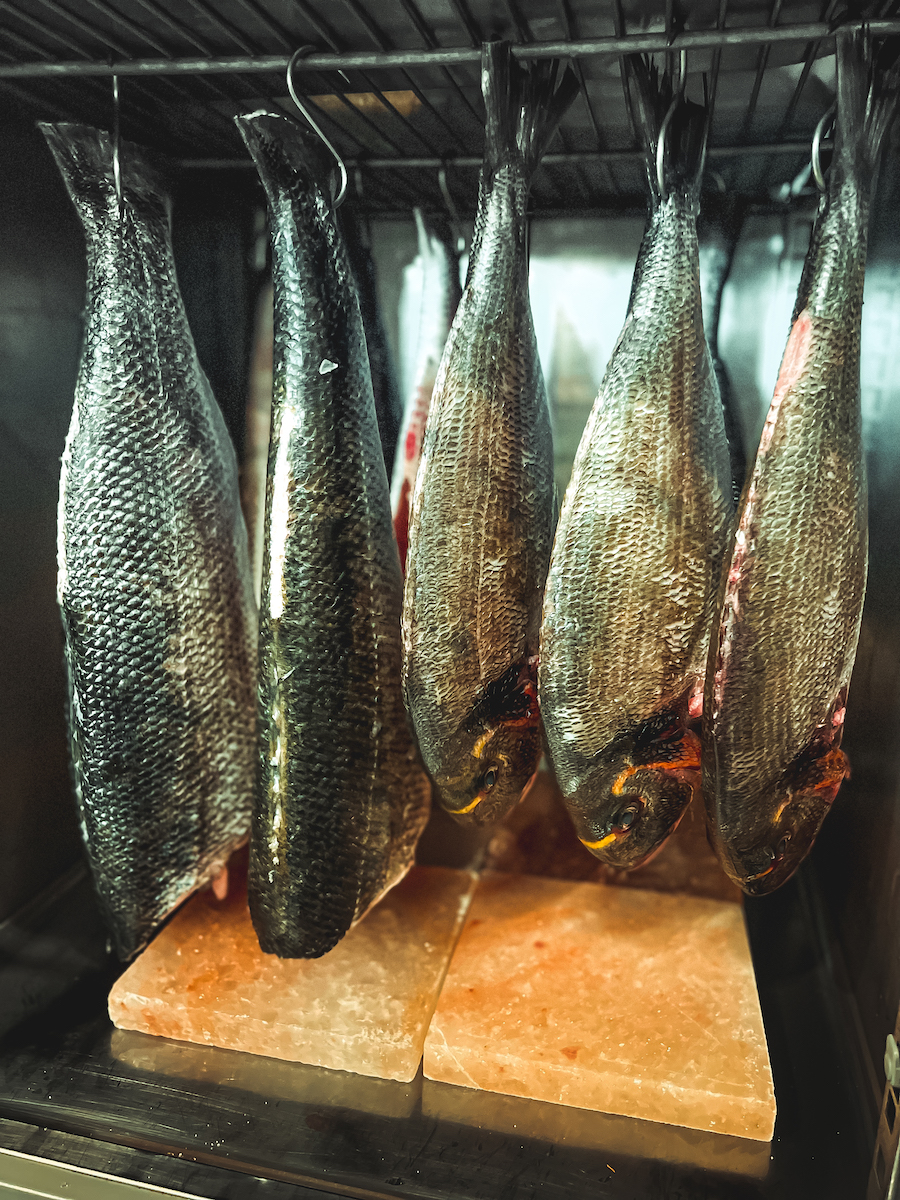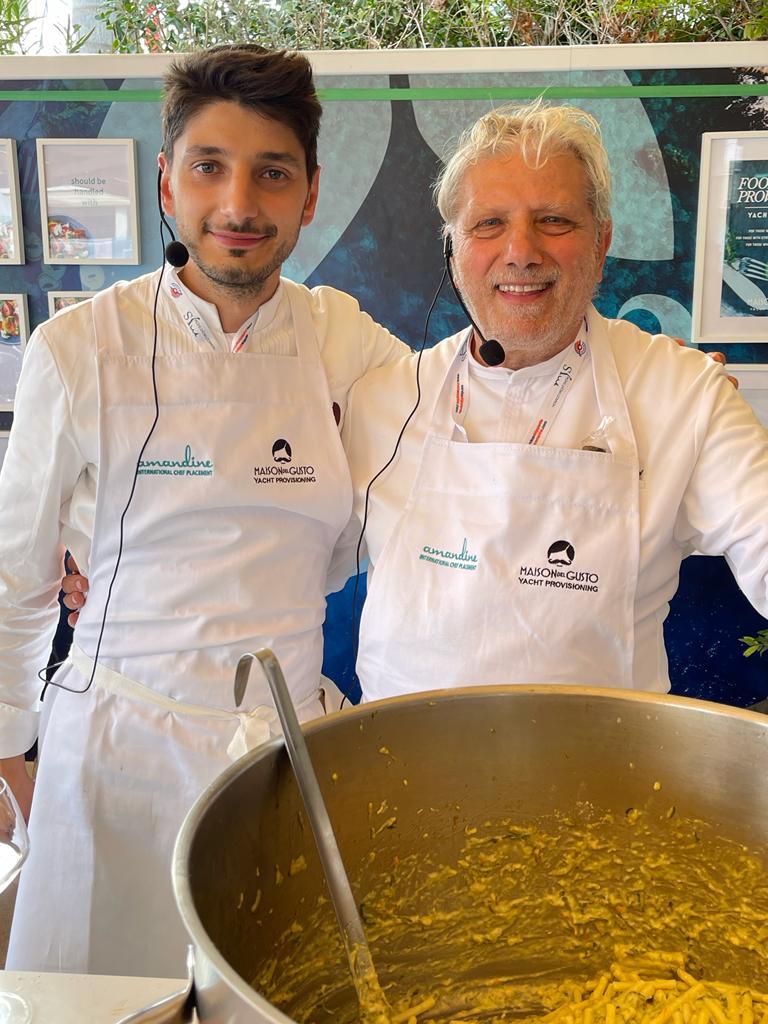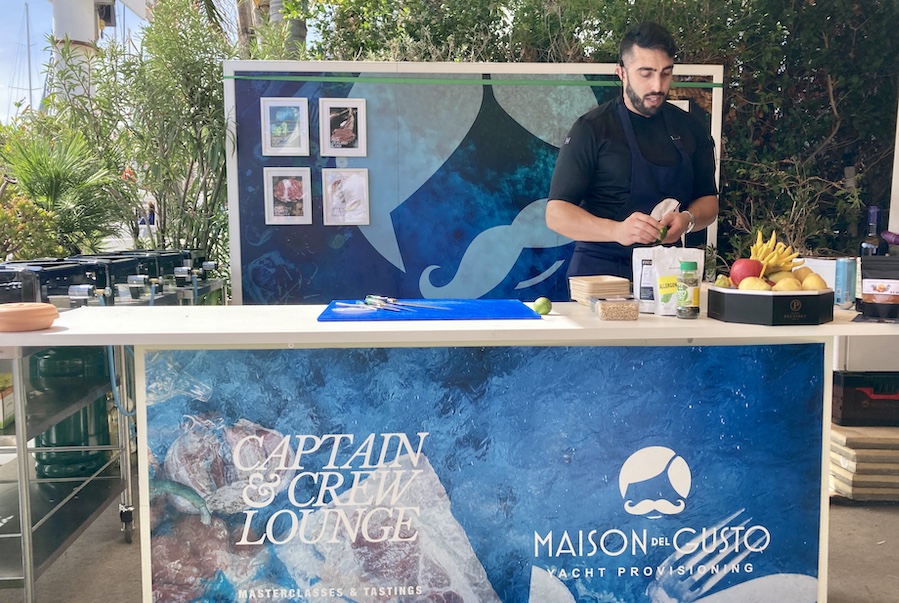The Monaco Yacht Show is a veritable smorgasbord for networking and new ideas, and the MYS Captains and Crew Lounge is a popular locale for industry professionals. It is here where, over the course of four days, Maison Del Gusto and Amandine Interntational Chef Placement hosted a series of masterclasses by hand-picked chefs.
And it appears as though pricey flavours have lost a bit of favour.
Ok, so it wasn’t ‘Bye bye’ to abalone, jamón ibérico de bellota, edible gold, or white Alba truffles exactly… but it was definitely ‘Hello’ to the seriously simple.
These folk waxed away about beetroot, celeriac, pumpkins and potatoes and chose food that could speak for itself; meddling is not à la mode.
Something fishy
Rarely do superyachts end up angling for food on the aft deck, but regularly do owners and guests want a ‘little fishy on their little dishy’. And there lies the catch…
Which is why head chef onboard 80 metre yacht MY Chopi Chopi, Manoel Crisanto, had an audience of fellow chefs eating out of his hand when he recently explained how to dry age fish. This Brazilian from Rio cut his teeth in the Michelin starred restaurant Le Pré Catalan (Rio) and has over 10 years’ experience serving up sensations on board the superyachts.
Says Crisanto, “Dry ageing fish is a very old technique, but now it’s getting its place in the market again. It’s not just about the clever way you can change the characteristics of the fish, making it tenderer, creamier and keeping the fresh taste, it’s also about minimising food wastage.”
Keeping fish fresh long enough for popular dishes such as sushi or ceviche is impossible on yacht charters or crossings (or anywhere else for that matter). Frozen fish for raw dishes doesn’t cut the mustard, which is why Crisanto started experimenting with dry ageing.
“I started to develop this technique to try to preserve the fish for longer, with salt and water solution and ice. Salt in the Med is about 4% so that is what we aim to use in this process.”

Crisanto combines salt and water with the ice to create a physical reaction that brings the temperature below zero. He explains, “Then you de-scale the fish, gut it, and put the fish in the solution for approximately one hour for a 4-5 kilo fish. Pat it dry and you hang it in the fridge. The optimum temperature needs to be at -2.” Those without a fish fridge can place the fish on a rack lined with kitchen towel that must be changed everyday. The same process can be done in a normal fridge on a rack with kitchen towel underneath, which must be changed daily.
He reveals, “What makes the fish smell is humidity. Dry aged fish is creamier, cleaner, tender and fresher than anything other than the ‘just caught’ version and can be kept from 10 to over 50 days, depending on fish size and species. This year I ordered my fish through Maison del Gusto from a source in Normandy. I made sure he knew I know about fish! You can’t rely on the Mediterranean catch anymore.”
Crisanto leaves the fish in the fridge for a minimum of four days. “But first thing I do everyday in the galley, even before I turn on the lights, is I sniff it because you never know, fish can be contaminated.”
He uses the process to age dry any fish but it works particularly well with amberjack, yellow tail, king salmon, tuna, sea bass and sea bream.
Peruvian Ceviche, Mexican tiradito and fish tartare, as well as sushi are menu favourites of the minute. Crisanto served up three raw fish dishes to his fellow chefs: wild salmon with olive oil and lime, decorated with edible flowers; sea bream with dried tomatoes and Iranian pine nuts; and himachi with sesame oil, freeze dried yuzu and soya flakes. The dishes were accompanied by wines from Sacha Lichine’s vineyards at the Château D’Esclans near Fréjus.

Pasta perfect
Class act Antonio and his son Fabrizio Mellino own and run the two Michelin starred restaurant Quattro Passi (four steps) at Nerano on the Sorrento coast. Papa Mellino was born in Buenos Aires but raised in Nerano. He opened Quattro Passi in 1984, had his first Michelin star in 2000, and the second in 2011.
Fabrizio has worked as head chef in the kitchens for the last five years. He studied at the Institute of Paul Bocuse at Lyon, France, and went on to sharpen his skills and his knives at Monaco’s Louis XV at the Hôtel de Paris. Then he moved to Spain’s three-Michelin starred Quique Dacosta, before a spell in Japan at Tokyo restaurants Tsuiama and Sushi-Go.
He says, “Each restaurant and chef gave me a different experience and I don’t have a favourite. Now I prefer not to copy anyone but find my own way and conjure up the memories and tastes from my grandmother’s dishes.”
His favourites of hers include insalata di pomodori, parmegiana di melanzane, and polpette al sugo. “There are no secret ingredients in the cooking, it’s the choice and quality of the produce that makes the difference.”
Which is why he and his father selected the simplicity of local dish pennino alla Nerano to impress this ‘kettle’ of exacting cooks. Washed down with wines from Comte de Monte Carlo, the dish combined pasta with zucchini and zucchini flowers, basil and black pepper.
“I think my favourite dish is gnocchi alla Sorrentina with mozzarella cheese on top, and my favourite to cook is spaghetti with fresh tomatoes. But you have to have the best ingredients.” Mellino spends his winters haunting the olive mills to source the best oil of that year’s season. And he won’t go to work without his Sicilian salt: “It flavours the dish without the harsh aftertaste you get with other salts.”
Pennino alla Nerano by Fabrizio Mellino
Serves 1
80g pennino (penne pasta)
35 g french butter
1 courgette sliced
2 basil leaves
2 courgette flowers
15 g parmesan cheese
Black pepper
Method:
Fry the courgettes and put aside for a day
Boil and cook the pasta
Revive courgettes with two tablespoons of pasta water
Discard water
Melt butter, add courgettes, pasta, cheese, flowers and season with black pepper.
Buon appetito!
Photo above of Chef Manoel Crisanto by Monaco Life
